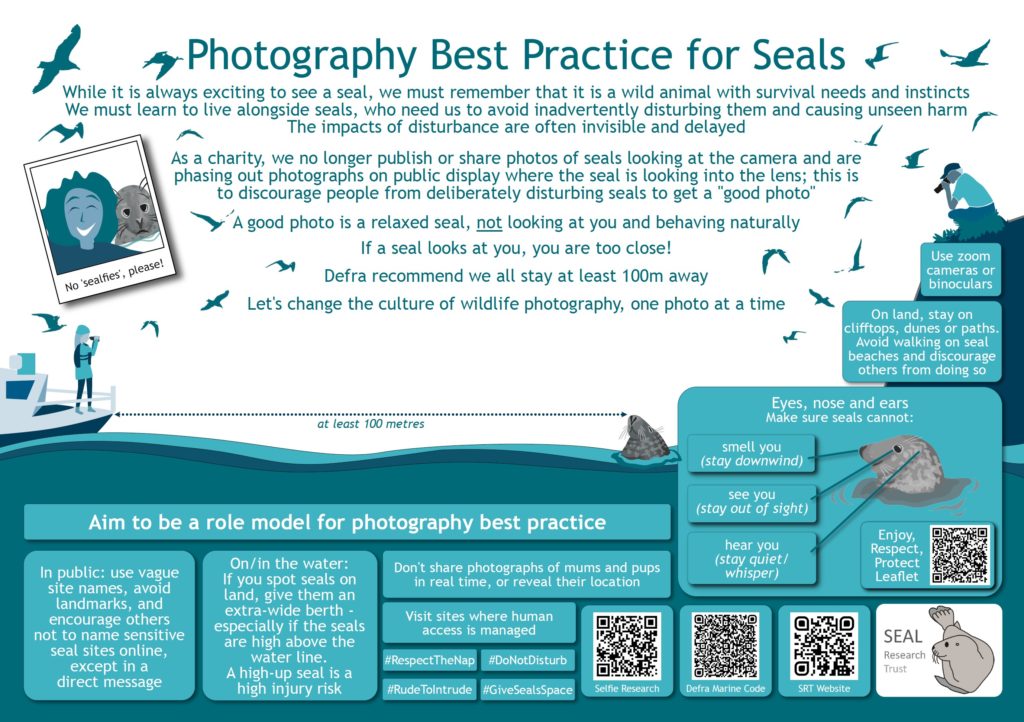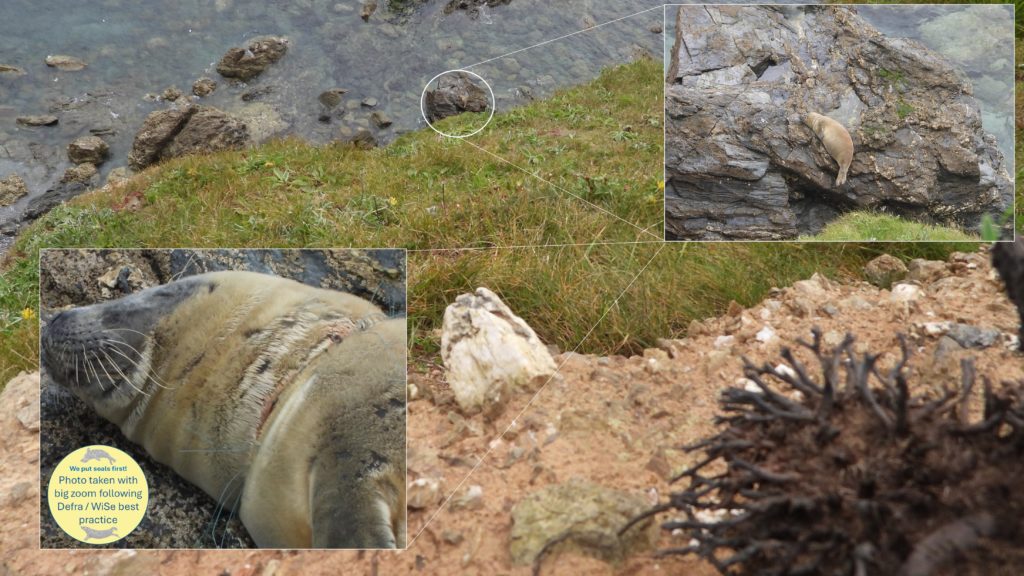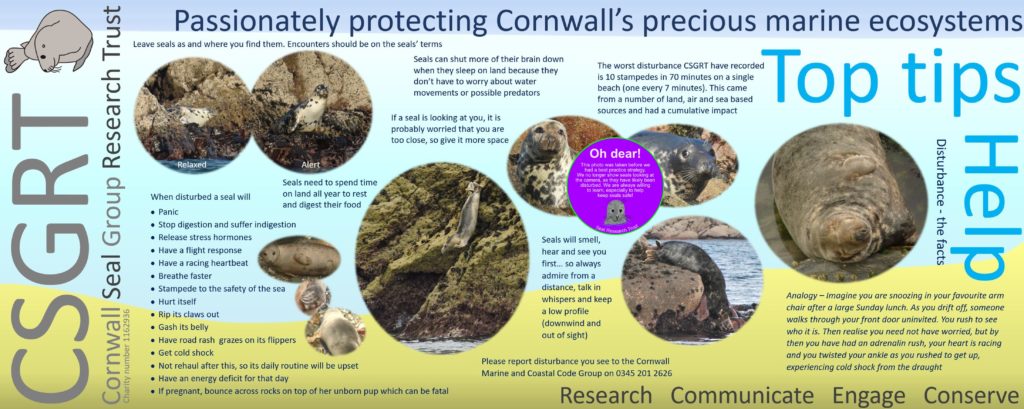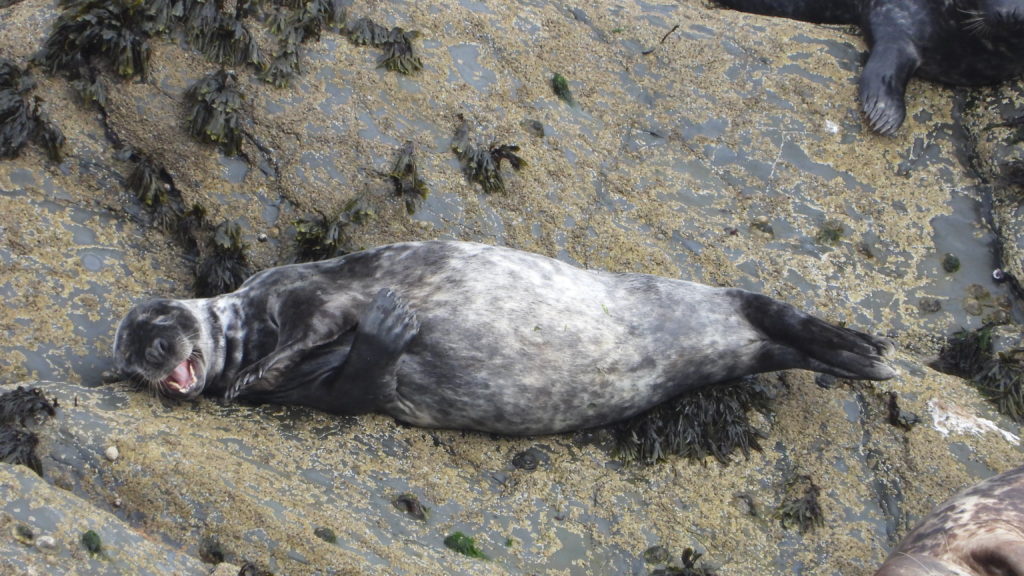No ‘sealfies’ please
Please put seals (and all other wildlife) first when taking their photos! See how, by scrolling down to our ‘Photography Best Practice for Seals’ graphic below.
It is pretty clear (and most of us are already aware) that taking a selfie ‘sealfie’ with a seal usually means you are way too close with your mobile phone, which is not in the seal’s best interests.
Less obvious are the shots that would win a best wildlife photography award with a seal looking directly down the camera lens. But is this best for the seal?
Here at the Seal Research Trust we have done some soul searching and realised these photos are often NOT the best for seals.
Photography best practice for seals
Basically a photo taken with a seal (or any other wildlife) looking at the camera means the animal was probably aware of the photographer and so has likely been disturbed. Whilst we appreciate this is not always the case, we have taken the tough decision to role model best practice by not using photos of seals alert and looking at the camera. Instead, we now share photos of seals looking relaxed and apparently oblivious to the camera and photographer. This is actually vital when conducting research, as we need to avoid impacting their natural beaviour in any way to get meaningful outcomes. As a result we have taken some epic and unsual photos of seals doing anything but looking at the lens.
As you can probably imagine this is not a popular realisation for many wildlife photographers. All we can do is raise their awareness, let them think about what they do, and then make their own informed choices about what kinds of photos they take and share in the future. To get a free pdf version or A3 hard copies of this poster to distribute, please email [email protected].

Photography best practice stickers
We have been engaging with other wildlife NGOs and had discussions about wildlife researchers posing with their target species. What message are the public taking away from us researchers when we share photos of ourselves in close proximity to wildlife? One of the QR codes on this graphic links to some interesting research about primate photography. It suggests that adding a caption to the photo to explain the context in which it was taken rarely communicates the emotional response we’d expect in the viewer. Let’s face it, people often don’t read captions anyway or share them along with the photo.
As a result we have worked with seal partners in San Diego to come up with the idea of ‘photo best practice stickers’. These are embedded in the photos and we aim to routinely change them and have different designs and colours to avoid our brains thinking ‘I’ve seen that before so I don’t need to read it’.
Communicating the context of apparently close up photos
We have also decided to start communicating just how far away we are when taking the photos we share on social media. They look close up, but are anything but! Sadly, when zooming in, it becomes apparent that this poor juvenile seal is severely entangled in lost monofilament fishing gear and in need of rescue. Whilst we alerted British Divers Marine Life Rescue to its plight, seals are just not accessible for rescue at this site (for obvious reasons, given the unstable nature of these cliffs).

Legacy resources stickers
Finally, we have legacy resources that are displayed at public events and in exhibitions. We can’t just throw them away because we have learned and changed our policy. So to avoid being hypocritical, we have created stickers for these, too.

These stickers say ‘Oh dear! This photo was taken before we had a best practice strategy. We no longer show seals looking at the camera, as they have likely been disturbed. We are always willing to learn, especially to help keep seals safe!’
To get free .png versions of either of our stickers to use or share, please email [email protected].
Time for you to decide
Thank you for taking the time to read this best practice photography for seals. All we can ask is for you to think about this and make up your own mind. Together we can change the culture of wildlife photography ‘one photo at a time’.
This is one of our favourite photos taken in 2023, showing natural wild seal behaviour. Eyes closed, natural and relaxed. The seal looks like it is laughing, but actually it is relaxed enough to be yawning.

To help us continue learning more about what we do, pushing the boundaries and sharing best practice, please consider buying your next gift from our ‘One stop sealy online shop’.
